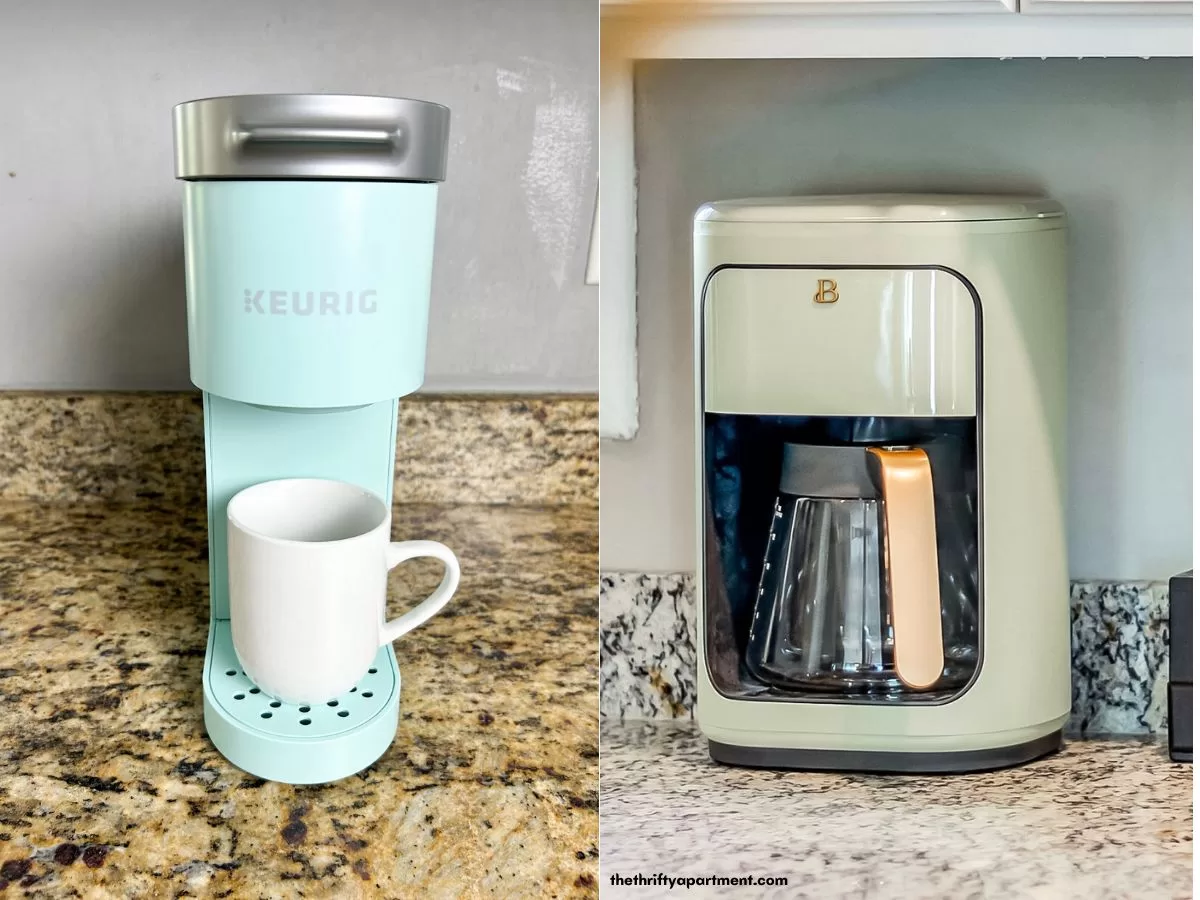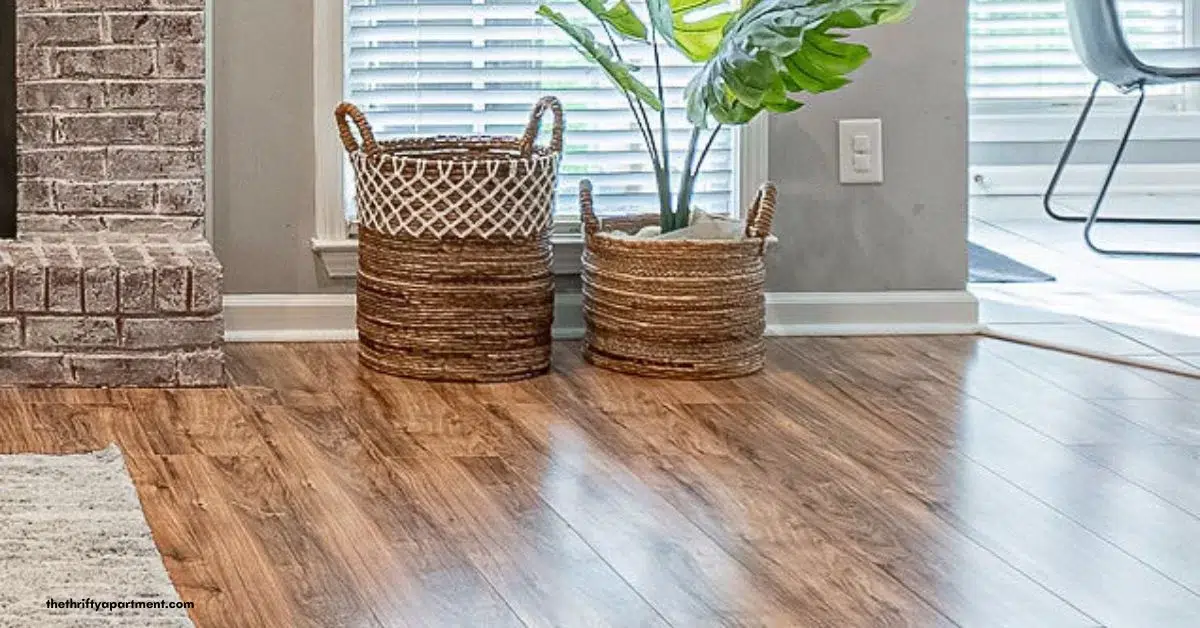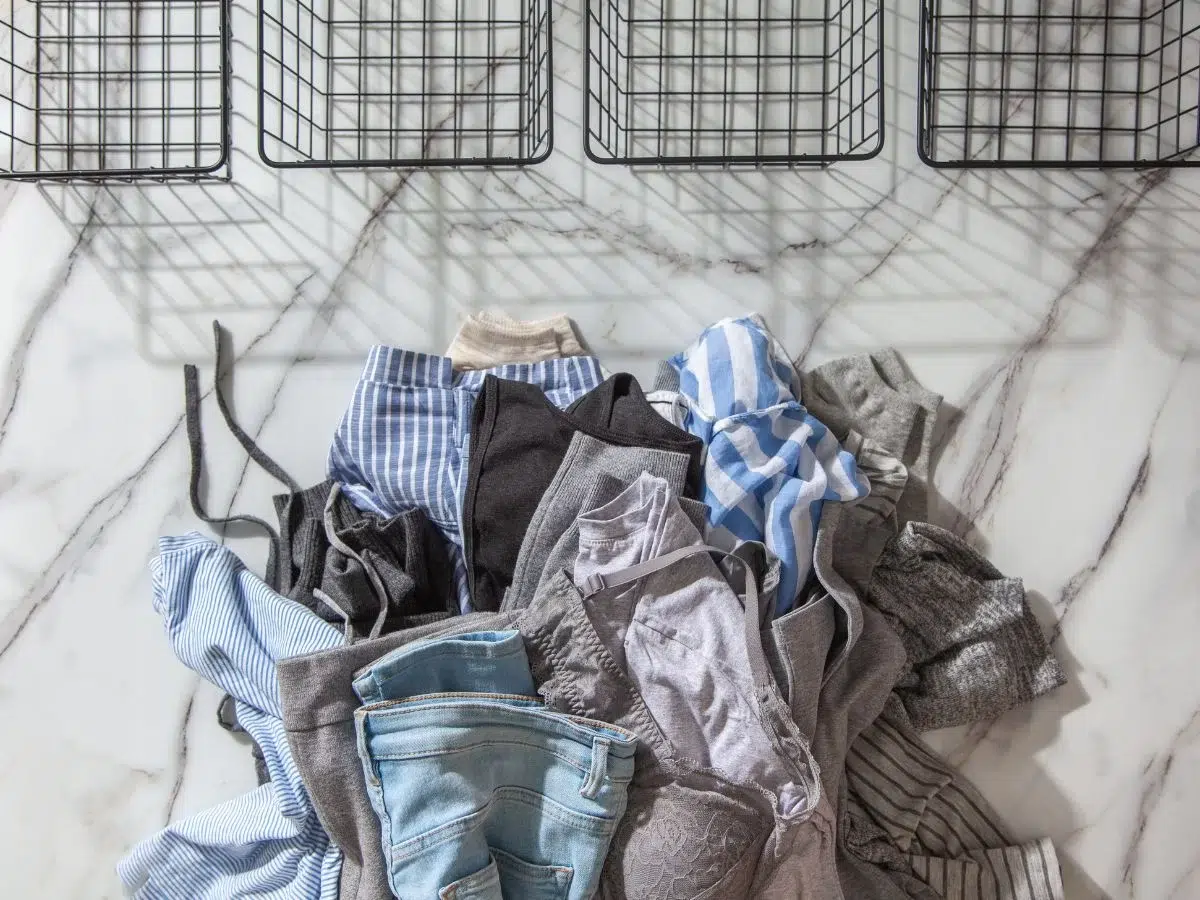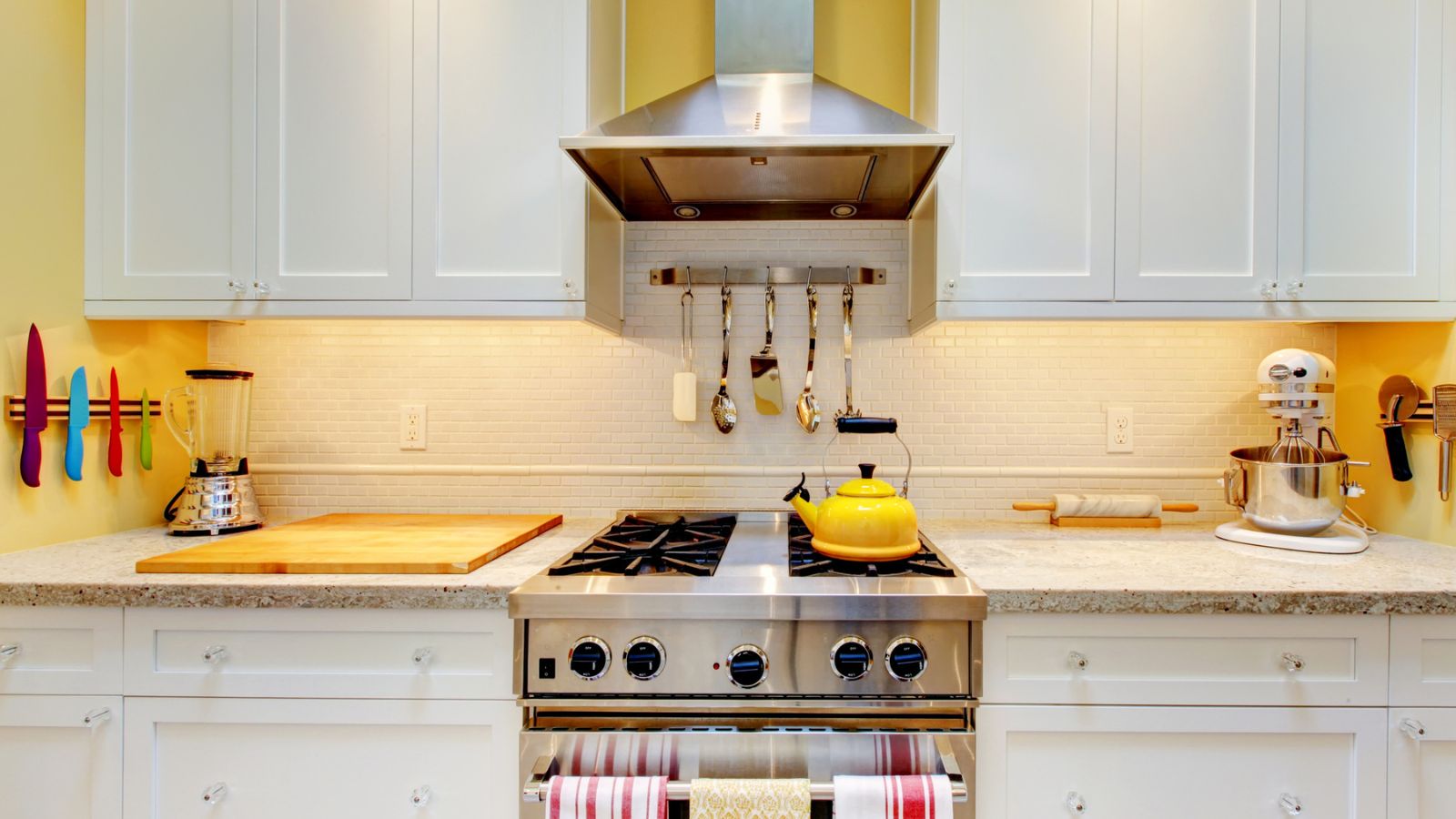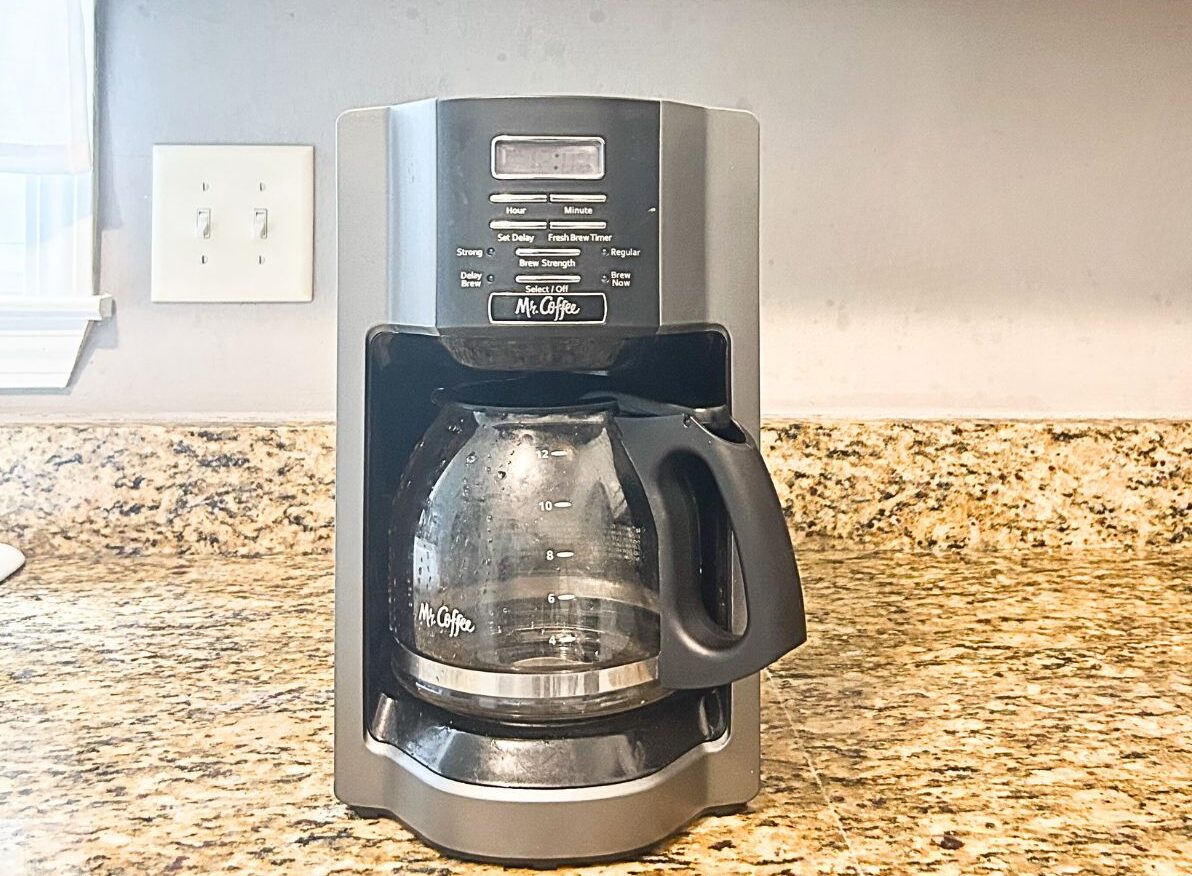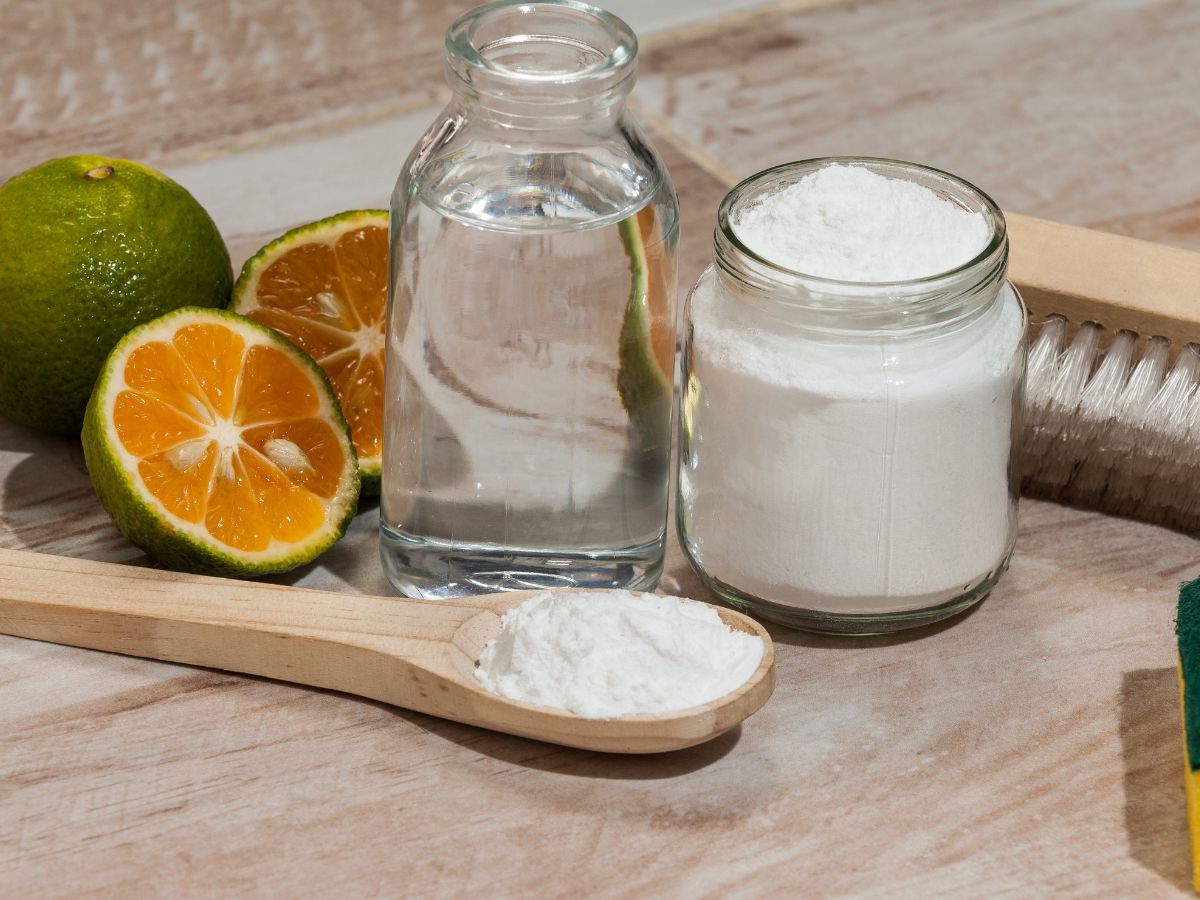This post may contain affiliate links.
Mold in the shower is not only unsightly, but it can also be harmful to your health. As someone who loves to clean, seeing mold in the shower can be irritating and, quite frankly, gross.
Fortunately, there are several ways to effectively clean mold in the shower – and prevent it from returning. From natural remedies like vinegar and tea tree oil to commercial cleaning products, there are options for every preference and budget.
Follow along as I share how to clean mold in the shower – and finally, get rid of mold once and for all.
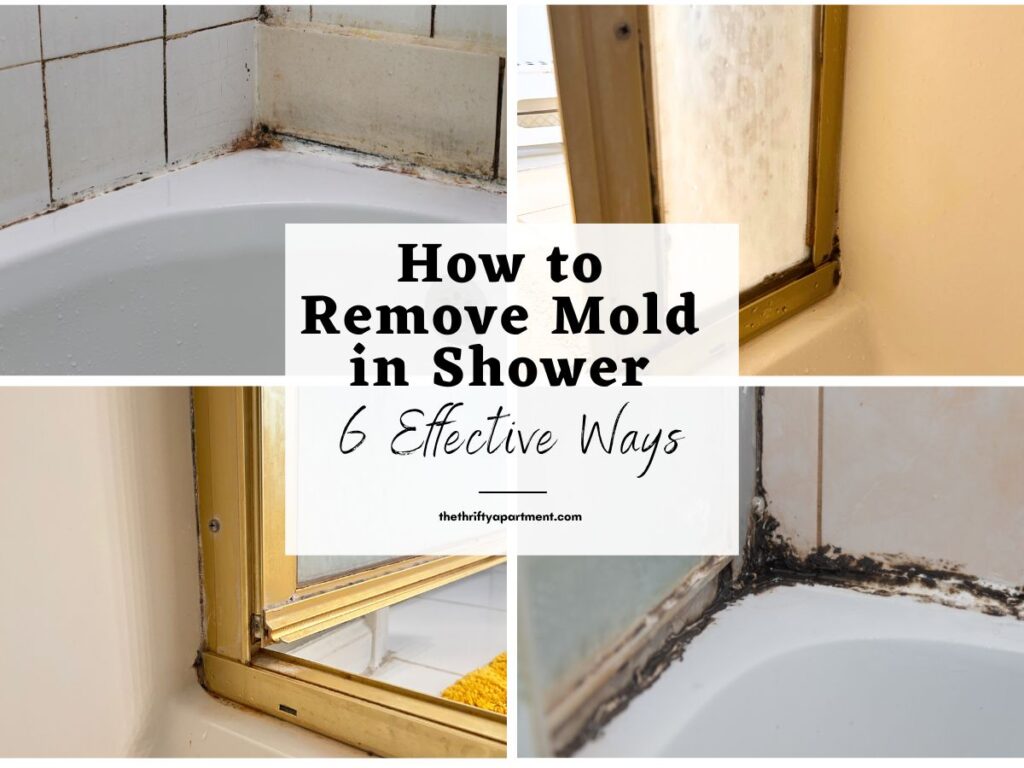
What is bathroom mold?
The CDC defines mold as fungal growth that forms and spreads in various damp environments or decaying organic matter. Mold is quite common in a household, and there is always some kind of mold around. It is just a part of the natural environment.
Black mold and pink mold are most commonly found in bathrooms. Whether white or black grout, mold can be found in the grout lines of tiles and caulking. It can also be found in the corners of the shower, around drains, and on the shower walls.
While the type of mold in your bathroom may not be dangerous or toxic black mold, the CDC recommends treating them as though they are toxic mold by getting rid of them as soon as they appear.
Mold could easily spread throughout your bathroom and home, ruining your personal items and possibly compromising your health.
Mold flourishes in constant moisture and thrives on soap residue and other bathroom shower products. Unfortunately, the bathroom can be the perfect breeding ground for mold, and some bathrooms are susceptible to mold – despite your cleanliness and regular cleaning.
The EPA states that mold could potentially cause health problems and allergic reactions. Inhaling or touching mold or mold spores may cause health issues or allergic reactions in sensitive people or people with respiratory issues such as asthma.
Other health risks and reactions may include hay fever-type symptoms, such as sneezing, runny nose, red eyes, and skin rash, and its exposure can irritate the eyes, skin, nose, throat, and lungs of both mold-allergic and non-allergic people.
If you are unsure of the severity of your mold problem or if it’s a mold infestation in your bathroom, you can consult a professional or use a home mold testing kit.
Ways to Get Rid of Mold in the Shower
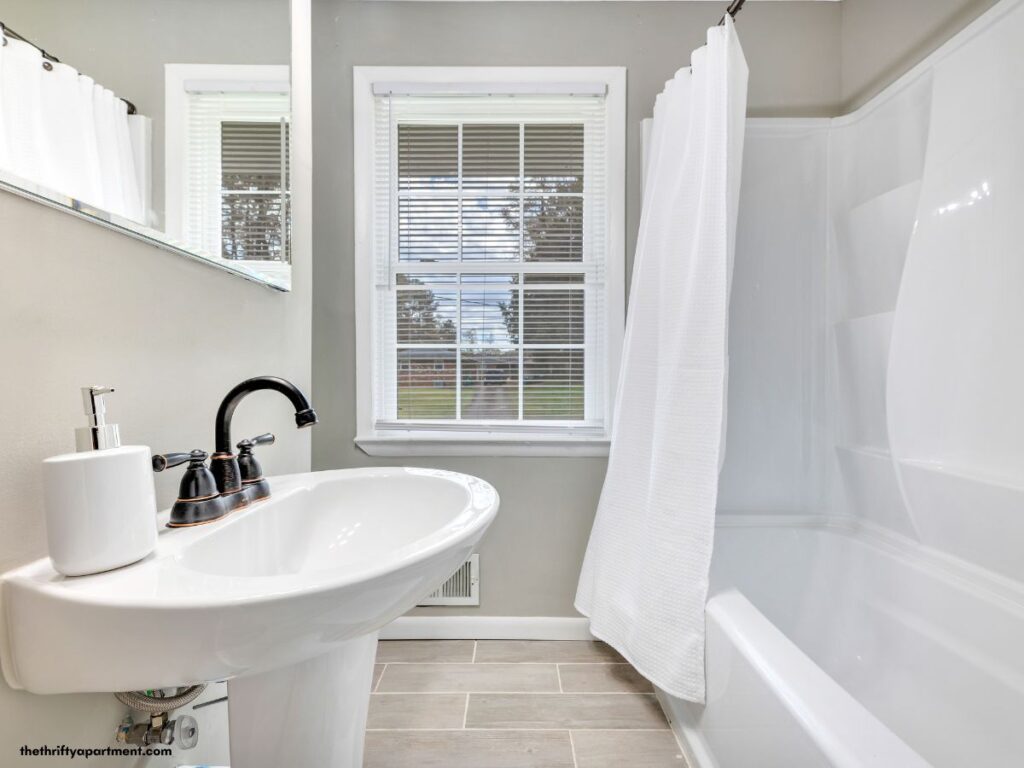
There are various ways to get rid of black mold in the shower, and I promise you that I’ve tried them all! Check out the various ways to get rid of mold using chemical solutions as well as natural substitutes. Depending on the severity of your mold, some ways are more effective than others.
1. Toiler Bowl Cleaner
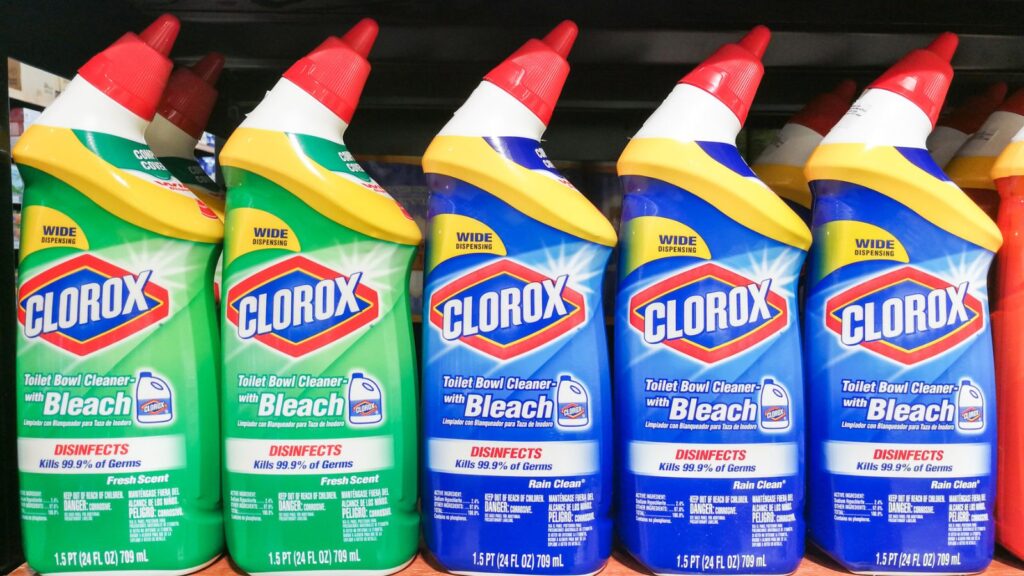
A toilet bowl cleaner has more uses than just cleaning the toilet bowl. And one of those uses is its high effectiveness in removing mold.
The brand of toilet bowl cleaner that I like to use is Clorox – Clinging Bleach Gel, but the truth is that any toilet bowl cleaner should suffice.
Toilet bowl cleaner will cling to the mold and dismantle it almost immediately. All you have to do is pour the toiler bowl cleaner on the affected area with mold and then place some paper towels to keep it in place.
2. Tea Tree Oil
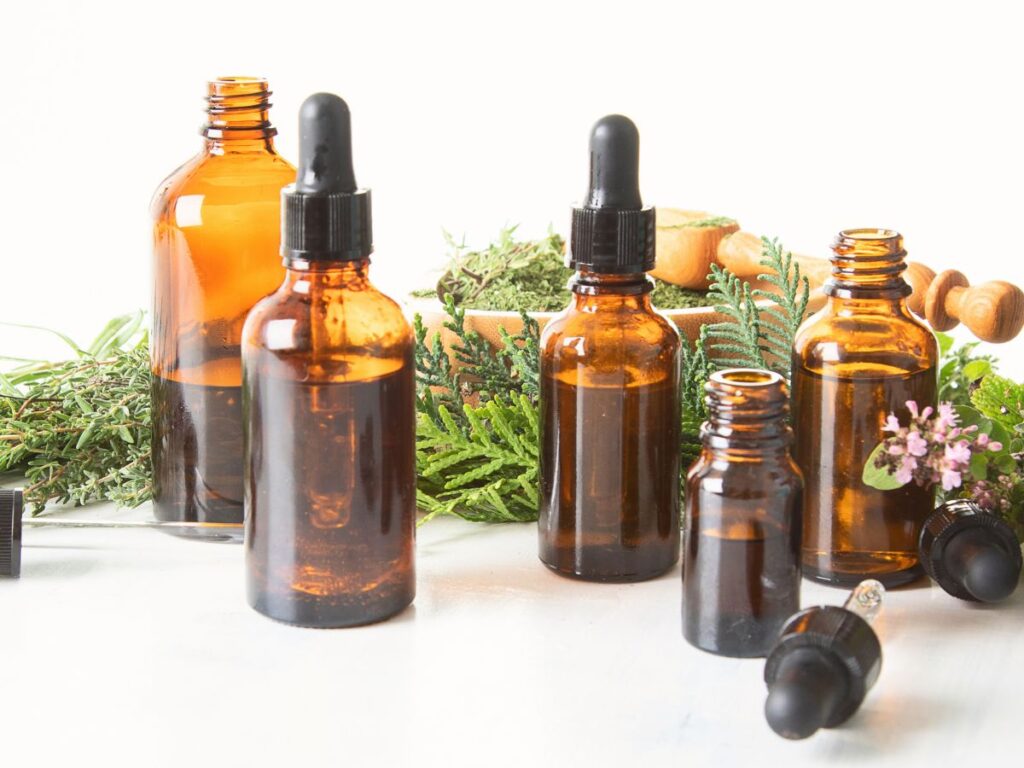
Tea Tree Oil is an effective way to combat mold and keep it from coming back.
Tea Tree Oil is a natural essential oil with powerful anti-fungal and antibacterial effects. Essential oils are environmentally friendly and have a very earthy fragrance that can help to mask certain odors.
To use it, use one teaspoon of Tea Tree Oil with one cup of water. Add it to a spray bottle and mix it all together. Spray the moldy area and let the oil solution sit for about an hour (or until you notice mold spots have vanished).
Scrub any remaining stubborn mold residue using a surface cleaner and then a dry cloth to wipe it away. This should do the trick.
3. Vinegar
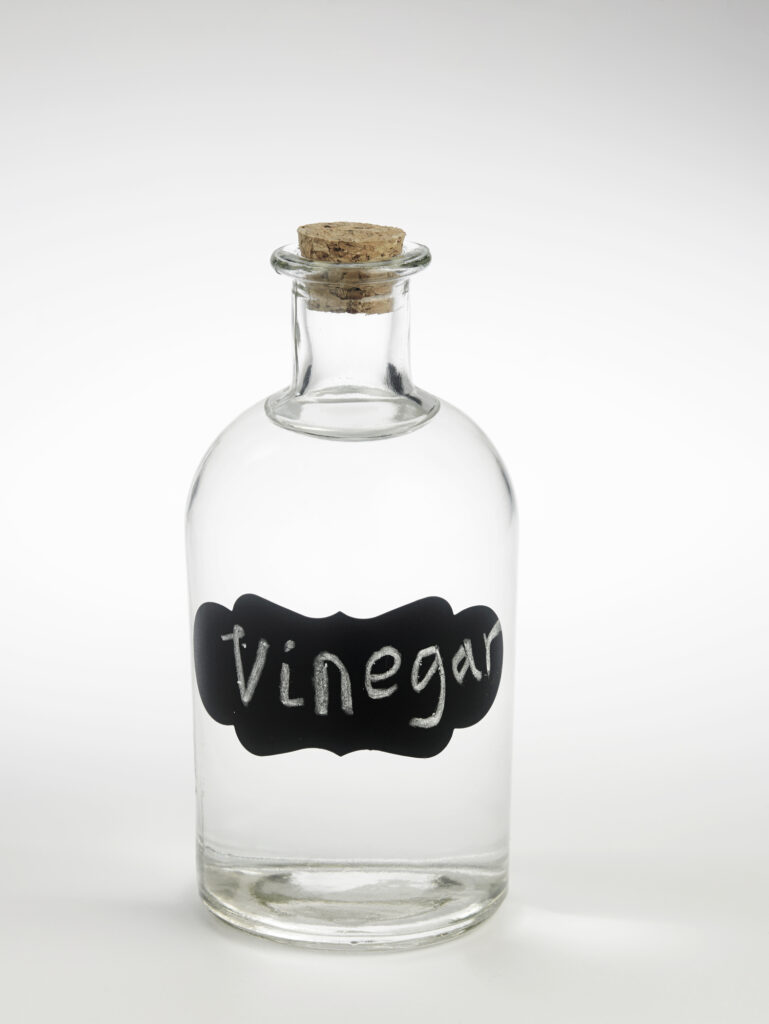
White vinegar is another natural, safe, chemical-free way to eliminate mold. White distilled vinegar can effectively get rid of most molds.
Just add undiluted vinegar to a spray bottle. There’s no need to add anything else as it will impact that vinegar’s potency. Spray vinegar on the impacted area and allow the vinegar to sit on the mold for 45 minutes. You can then use an old toothbrush or scrub to remove the residue.
If you find that the vinegar is sliding off the affected area, you can also soak cotton balls or toilet paper in vinegar and place it on the area.
4. Hydrogen Peroxide
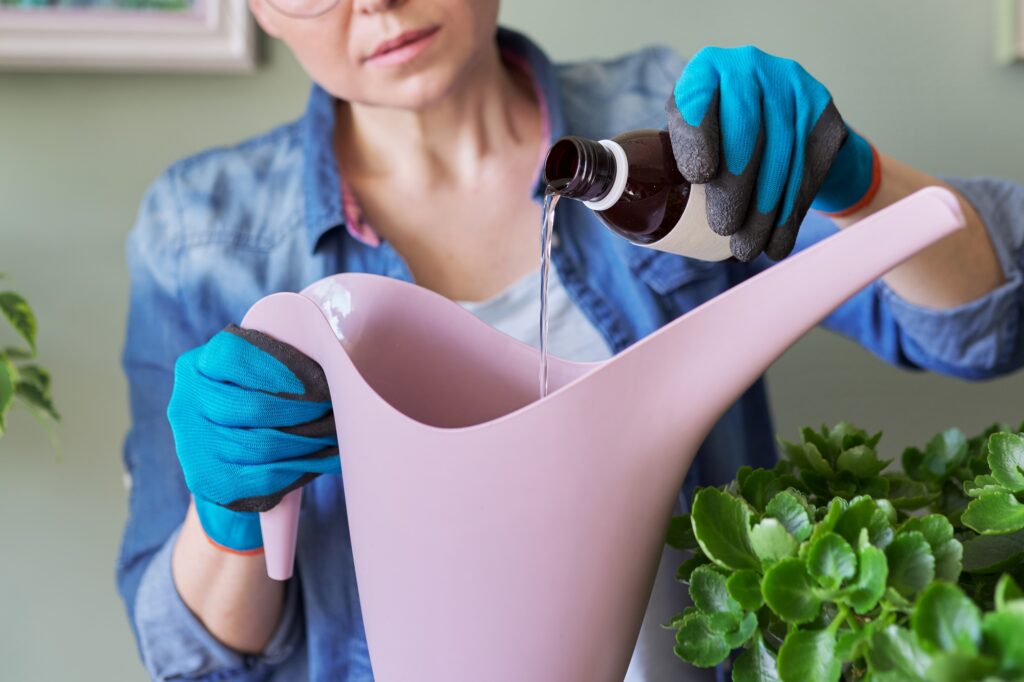
Like vinegar, Hydrogen peroxide is also very effective at getting rid of mold. It is non-toxic, but it has a mild bleaching ability. Hydrogen peroxide is naturally antifungal and antibacterial, which makes it ideal for combating mold.
Just add the peroxide to a spray bottle and spray the impacted area. Allow it to soak in for 30 minutes. Then, lightly scrub it with a cloth or scrub brush.
5. Baking Soda
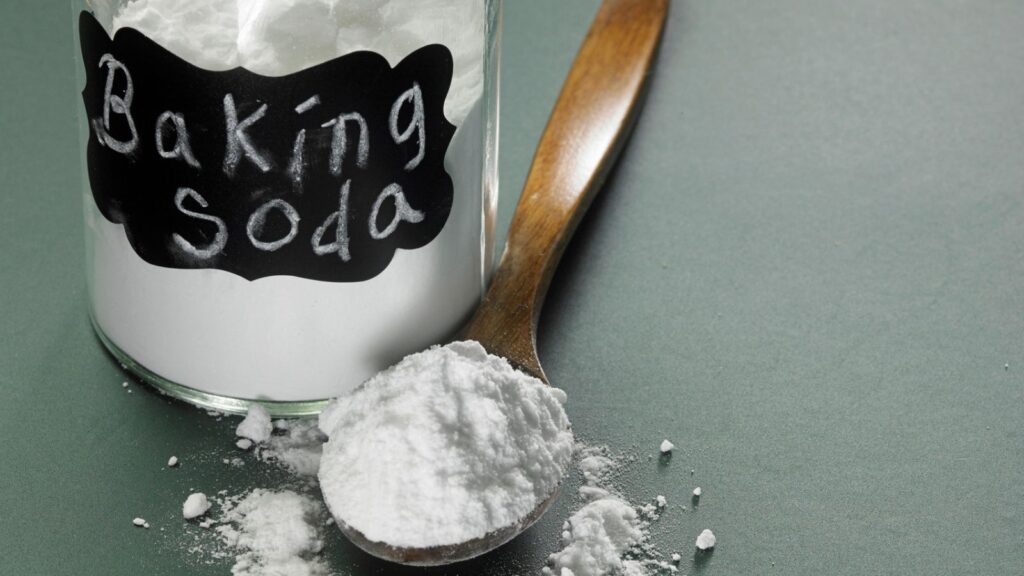
Baking soda is another non-toxic way of getting rid of mold. Baking soda is known for attacking mold by absorbing its moisture and destroying the mold.
Just create a baking soda paste by using baking soda and water. Make it just thick enough to cling to the mold. When applied to the mold, allow it to work for one hour or longer if necessary.
Use a brush to scrub off the baking soda solution, then wash the area with hot water and a wet sponge.
6. Bleach
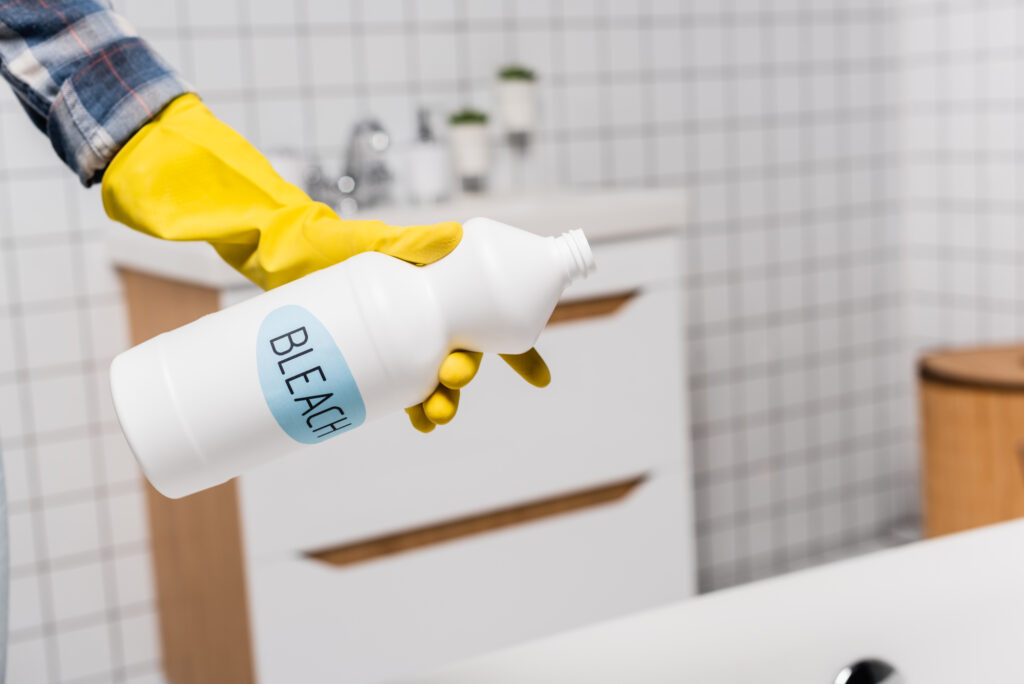
Chlorine bleach is the most widely used and well-known solution for removing mold. Since bleach is a household cleaner, it is easily accessible in most homes. However, bleach can be very toxic and harsh, so you must do the following to effectively remove mold.
- The first step is to open up windows and doors to help with adequate ventilation.
- Wear protective gear such as gloves and a face mask.
- Add a cup of bleach with two cups of water to a spray bottle
- Spray the bleach solution on the mold and let it sit for 10-15 minutes. You may want to leave it on longer if you have really tough stains.
- If mold remains after this time period, you can use a brush to scrub away the mold.
- Rinse the area with warm water and allow it to dry.
While bleach is excellent for removing mold, it doesn’t entirely kill the fungus that may have permeated the bathroom shower. The mold may continue to come back and grow over time.
How to Prevent Mold in Bathroom?
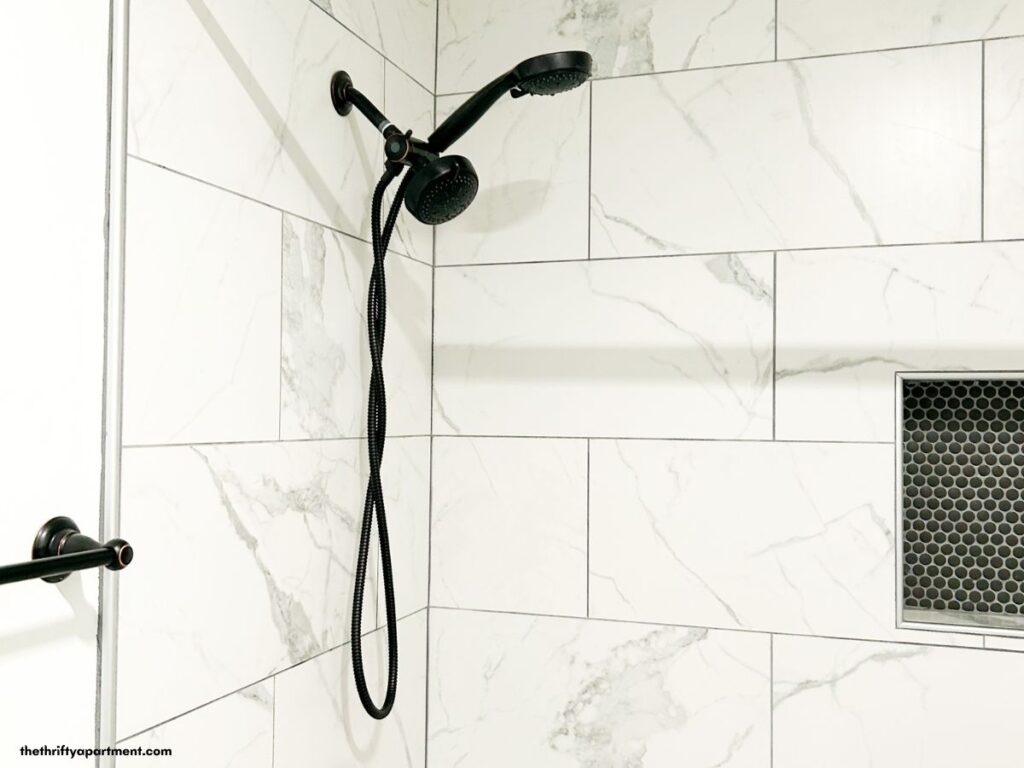
The best defense in preventing mold is controlling the amount of moisture entering your bathroom. Mold thrives with excess moisture and is required for it to grow.
However, you can limit mold growth by keeping the area as dry as possible. Keeping the bathroom dry and well-ventilated is the most promising way to prevent mold growth.
Here are a few ways that you can prevent mold from coming back:
- Address plumbing issues pertaining to leaks and water, including leaky bathroom faucets, clogged drains, dripping water, roofs, a wet basement, and random pools of water in the bathroom.
- Do not leave wet towels or laundry on the bathroom floor; dry bathroom mats when wet.
- Ensure proper ventilation and air circulation in the bathroom. Use the bathroom exhaust fan whenever taking a shower. You can also leave the bathroom window or door open if you don’t have a fan.
- Wipe the wet shower door with a clean cloth or squeegee immediately after showering.
- Keep a spray bottle of undiluted vinegar solution in the bathroom. Use the solution weekly on bathroom surfaces and walls. This will help to kill mold spores and prevent their growth.
- Clean the bathroom regularly, keeping a close eye on mold regrowth. Immediately treat any mold that has appeared.
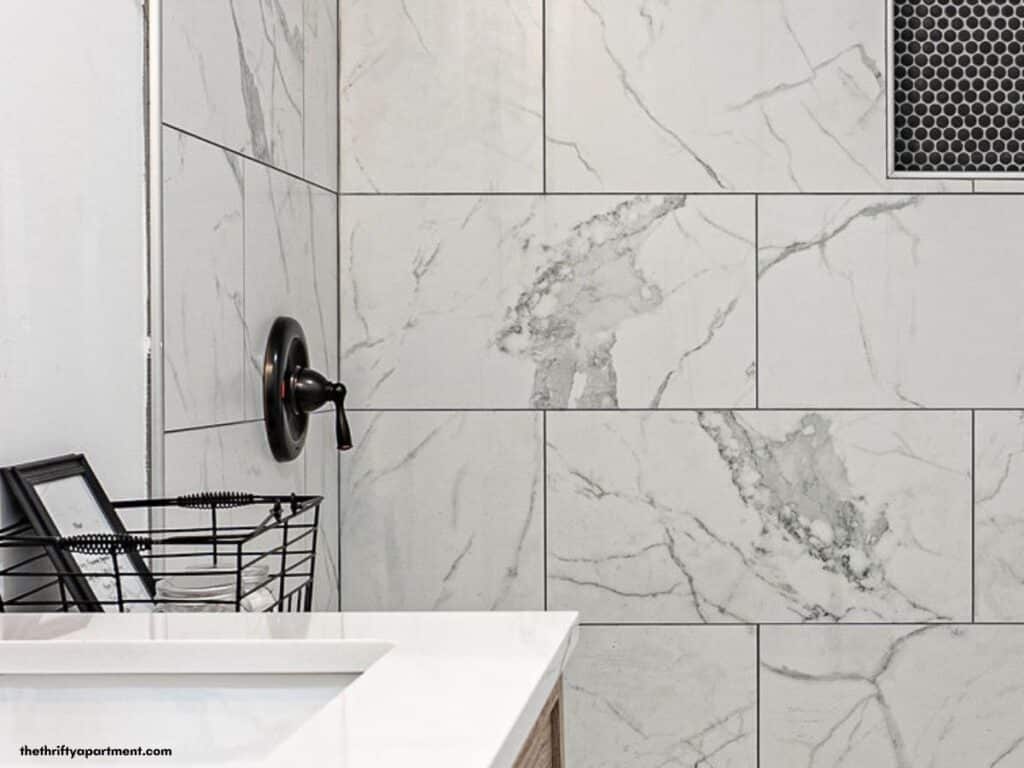
Cleaning mold is no fun. But if not handled quickly and thoroughly, mold can get out of hand and become problematic in a household. Thankfully there are a number of solutions and techniques you can use for mold removal.
While mold is common in most household bathrooms, if you stay on top of it, you can also prevent it from coming back.
Now that you have all the different techniques to get rid of mold, it’s time to grab your gloves, mask, and cleaning solution and get rid of that unsightly mold.
Other bathroom and cleaning ideas you might like:
- Pros and Cons of Using Black Grout in Bathroom or Kitchen
- How to Clean Bathroom Shower Door
- 12 Renter-Friendly Bathroom Makeover Ideas
- How To Clean Vinyl Plank Flooring
- How to Clean a Couch with a Steam Cleaner or Upholstery Cleaner
I’d love to hear your thoughts about this article, so leave a comment below. Feel free also to follow me on my social media pages – Pinterest and Instagram or subscribe to my mailing list for other design inspiration and home decor ideas.
Tamara White is the creator and founder of The Thrifty Apartment, a home decor and DIY blog that focuses on affordable and budget-friendly home decorating ideas and projects. Tamara documents her home improvement journey, love of thrifting, tips for space optimization, and creating beautiful spaces.
